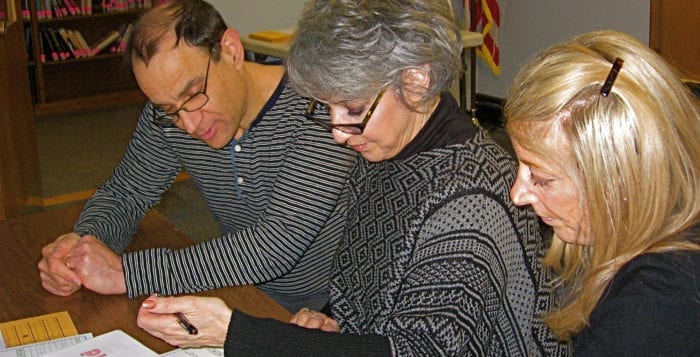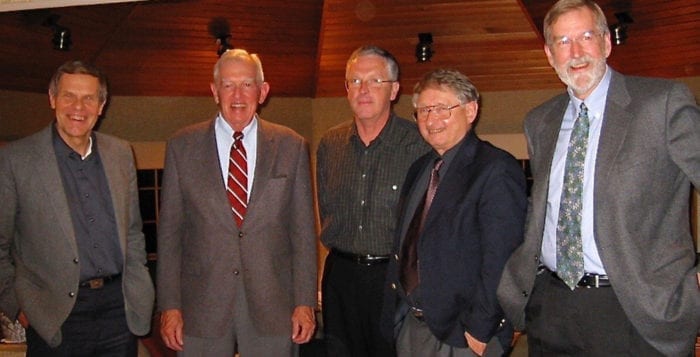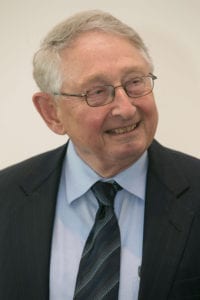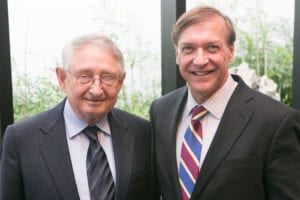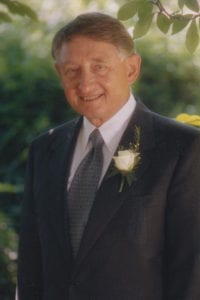By Donna Newman
When Helen Stein Shack passed away three years ago, her children wanted to celebrate their mother’s life with a legacy she’d have loved. Where to do it was an easy decision because Shack was both a bibliophile and a big fan of the Emma S. Clark Memorial Library in Setauket.
Library Director Ted Gutmann recalled how Shack’s children approached him to establish an endowment that would support an annual event in her memory each April. They only needed to decide what the event would be.
“They wanted to do something at the library specifically dealing with children and literature created expressly for young readers,” Gutmann said. “Librarian Nanette Feder had a group of teenagers working with younger children. We asked the teens if they’d like to try writing picture books. We created a contest, established rules, and offered a cash prize. The first year we promoted the contest through social media, the library website, department chairs and school librarians. Now it’s taken on a life of its own.”
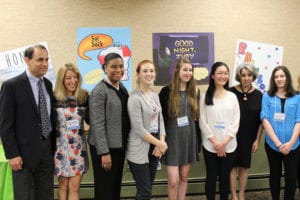
In an interview with three of Shack’s four children, as they gathered at the library Feb. 4 to review the entries, daughter Sherry Cleary explained their thinking.
“The inspiration for this library thing was that she really loved the process of children learning to read — and she loved this library,” she said. “It was our first choice to memorialize and honor her because when people would visit her, she would say, ‘Want to see my library? Let’s go see my library.’ She would bring people here, which is a little weird. It would make me laugh.”
All four children agreed that the library was the appropriate spot for Shack’s lasting legacy.
And now, the library is pleased to announce this year’s prize winners in the 3rd Annual Helen Stein Shack Picture Book Awards — a contest showcasing writing and illustration talent in Three Village secondary schools.
Each year students in grades 7 through 12 are invited to submit an original children’s picture book created by a single person or an author/illustrator team. There are two judging categories: Grades 7 to 9 and Grades 10 to 12. There is a first and second place winner in each category.
First Prize (Grades 7 to 9) goes to Eliana Sasson, an eighth-grader, for “We Can Still Be Friends,” which teaches children to embrace and celebrate differences. Second Prize is awarded to Nicole Freeley, a ninth-grader for “Sammy the Sock Monkey.” They are both students at P. J. Gelinas junior high.
First Prize (Grades 10 to 12) goes to Ward Melville high school sophomore Katie Zhao for “Claire and Her Bear,” about a young girl whose beloved teddy bear goes missing and the emotions she experiences when this happens. Second Prize is awarded to Cassidy Oliver, also a Ward Melville sophomore, for “Color Your World.”
“I think she had this drive to do things differently. The way she grandparented — and her roots in education — inspired us to [create] these awards.”
—Sherry Cleary
Shack was an intelligent and courageous woman. After graduating from Brooklyn College in the early 1950s, she obtained an elementary school teaching job in California, and boarded a train heading west, alone.
“At that time, it was an extraordinarily brave thing to do,” said Cleary. “People got married and stayed in Brooklyn. I think she had this drive to do things differently. The way she grandparented — and her roots in education — inspired us to [create] these awards.”
Cleary went on to describe the connection Shack made with her son, the first grandchild.
“I had the first grandchild,” she said, “but we were very far away. She didn’t see him often. She would tape her voice reading a children’s book and then send the tape and the book to him. So, he would sit in a big blue chair in our living room and listen intently to the tape and turn the pages when she made the noise [that signaled to do that]. He had connection to her in that way — and later, he became a librarian.”
Eventually, Shack had seven grandchildren.
Knowing how important children’s literature was to their mother, the family wanted their event to incorporate it in some way. Although Shack did not return to classroom teaching after remarrying and having two more daughters, when the girls were grown Shack tutored kids in the public schools. Her focus was on giving them access to literature. More than just teaching reading, she gave them access to books.
“And what you can get from books,” added daughter Karen Reid, “all the information. All questions get answered in books. And if you don’t have questions — read a book — because then you’ll have questions. [Our mother] was a big questioner and always wanted us to seek information in books. She thought it was wonderful that authors could write information in a way that kids would want to read it.” That impressed her.
Shack’s only son, Ed Taylor, said he didn’t think there was anything spectacular about his mother.

“She was just a loving person,” he said, “loved her family, her kids and her grandchildren, nephews and nieces. She always stressed education, always stressed reading. I don’t know if she was much different from other moms, but she was ours. She was special to us; but I think everyone’s mother is special to them. The best compliment I could give her: she was a good mother.”
Cleary talked about a third daughter, Barbara Kelly, who has three children. The kids would come for two weeks in the summer to visit their ‘savta’ (Hebrew for grandmother).
“They’d come in the house and unload all their stuff and she’d say, ‘Did you bring books?’ and they’d look at her and say, ‘No, we didn’t bring books all the way from California,’” Cleary said. “And she’d say, ‘Let’s go to the library.’ She’d bring them to the library to get books. As the children got older, on their way to visit they’d ask each other, ‘How long do you think it’ll be till we go to the library?’”
Shack fostered the notion that you should never be without a book. Unsurprisingly, her progeny are all readers. “The irony is, because she was so connected to the library, she did not have a lot of books in the house,” said Cleary, “which used to drive me crazy. She’d say, ‘I don’t buy books. I go to the library.’”
Winning authors will be recognized at a private awards ceremony at the library, Thursday, April 27 at 7 p.m. Each First Prize winner receives a $400 scholarship; each Second Prize winner receives a $100 scholarship. Bound copies of all the winning entries will be presented and added to the library’s Local Focus collection. All contest entrants receive certificates of participation. Light refreshments will be served, donated by The Bite Size Bake Shop, a local Three Village business.
The Emma S. Clark Memorial Library, is located at 120 Main Street in Setauket and provides public library service to all residents of the Three Village Central School District.

